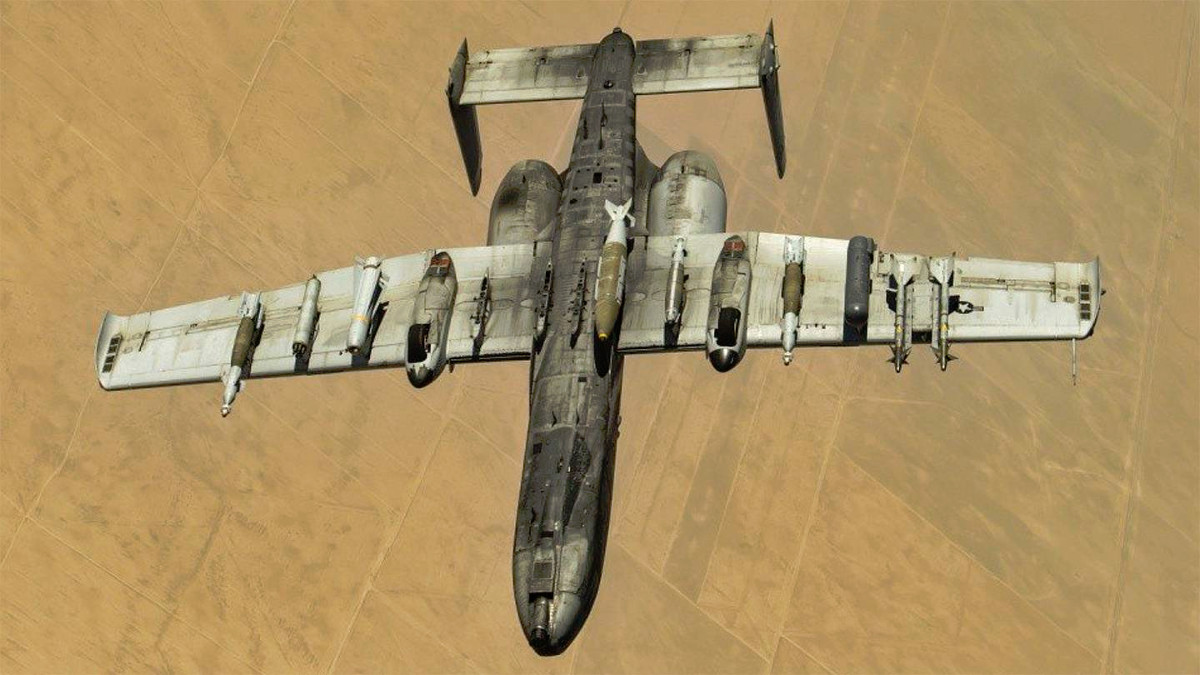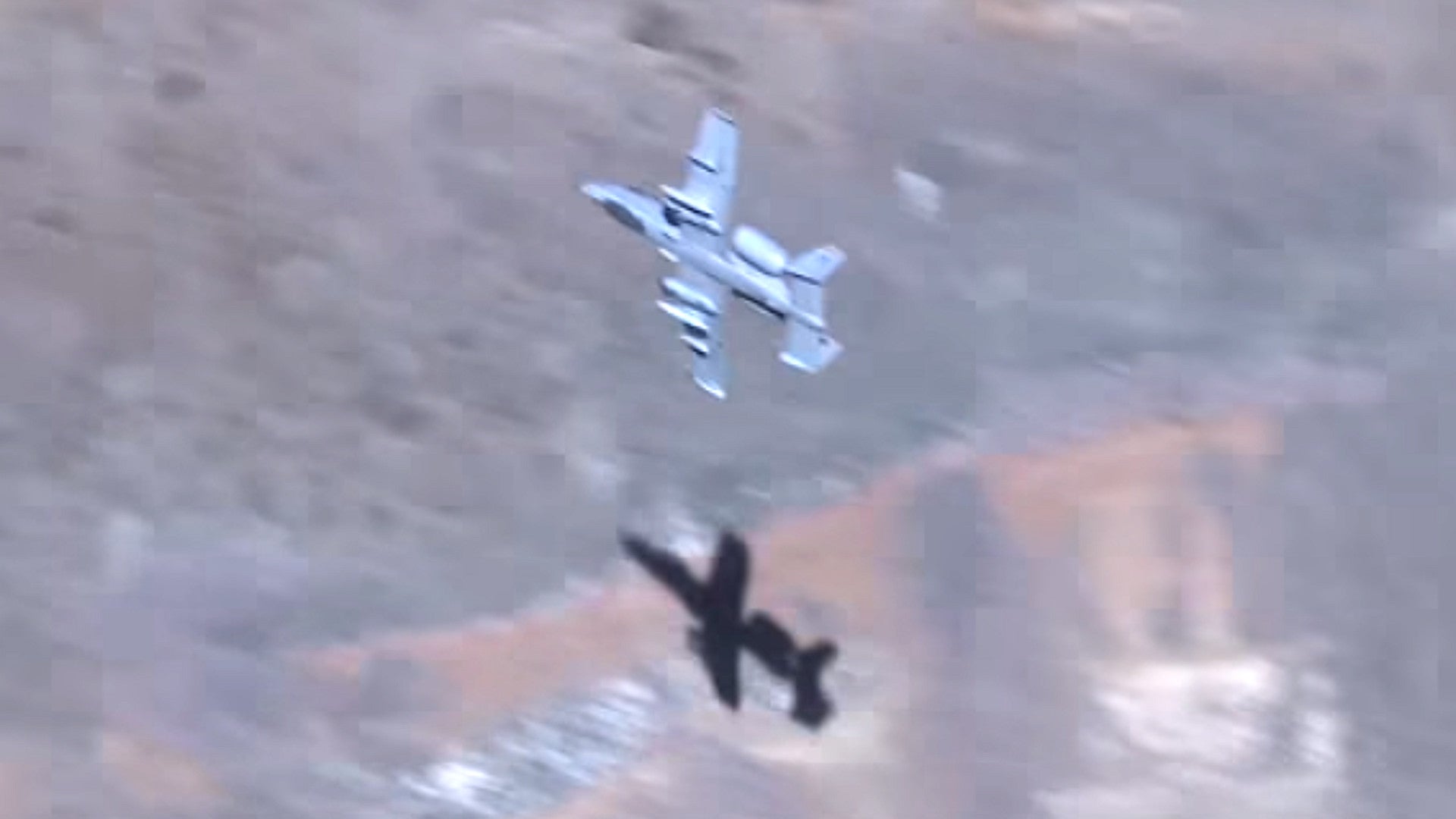Star Wars Canyon, also referred to as the Jedi Transition or Rainbow Canyon, is a mecca for aviation photographers, providing a beautiful location to watch military aircraft pull off intense maneuvers and sometimes even catch a glimpse of something particularly rare. But few aircraft look as at home zipping through the rugged terrain as the Air Force’s A-10 Warthog ground attack planes. In 2017, the team at Mantegani Photos grabbed a great video a pilot training for the U.S. Air Force’s A-10 Demonstration Flight Team showing off just how maneuverable the aircraft is in low altitude flight, putting the Warthog just about as close as physically possible to the canyon wall during one particularly spectacular pass.
Mantegani’s video includes footage from both Nov. 9 and 13, 2017 and shows the A-10 flying through the Canyon’s “Sidewinder” low-level route. All sorts of fixed wing and rotary wing aircraft use the area for training, which includes various low- and high-altitude routes and restricted operating areas.
But the Warthogs gets low as it goes zooming by and it gets closer to the canyon wall at around 0:53 in the video’s runtime than anything we have seen before. Its dramatic vertical exit from the canyon is also eyewatering. But we have to remember that shadows on hills and the camera’s depth of field compression may make the pass look a bit more dramatic than it actually was. But still, it certainly looks close. Regardless, there isn’t any reason to think that the maneuver was actually unnecessarily dangerous or risky, as the Warthog is a unique beast.

The A-10s Star Wars Canyon display emphasizes just how ideally suited the aircraft is for operating in the very low-level flying environment. Its flight characteristics at low altitude are unmatched by any other jet combat aircraft in the Air Force’s inventory.
On top of that, the A-10 community has cultivated unique expertise in low-level flight over more than four decades. Warthog pilots, or “Hawg Drivers,” are untouched among their Air Force cousins when it comes to getting right down in the thick of things at tree, or in this case rock level.
The pilot in the A-10 Demonstration Flight Team, which includes nine other supporting individuals on the ground is especially experience. The Air Force officially re-established this small organization in 2018 to perform at air shows and other events, pushing the A-10 to its max for cheering crowds. In 2012 and 2017, A-10s had been part of Heritage Flights, which also include a small demonstration of the aircraft’s skills.
It’s the special combination of pilots and planes, supported by dedicated crews on the ground, that makes the A-10s so indispensable for close air support missions to this day, despite decades of Air Force attempts
to retire the Warthogs for good. It’s also fostered a greater sense of comradery between these aviators and troops on the ground that doesn’t exist anywhere else in the service.
“If you were to say that there’s a grunt in the sky, it’d be a Hog pilot,” U.S. Air Force Staff Sergeant Joseph Hauser, a Joint Tactical Air Controller, or JTAC, said in 2015 for an official video presentation on operations in Afghanistan. JTACs work closely with ground forces to call in air strikes and close air support.

The Air Force is still keen to replace the Warthogs with the stealthy F-35 Joint Strike Fighter, but members of Congress have demanded a “fly-off” between the two aircraft to determine if the latter can adequately perform the close air support role. But “I wouldn’t call it a fly-off; it’s a comparison testing of the A-10 and the F-35,” U.S. Navy Vice Admiral Mathias Winter told Military.com in March 2018, suggesting that the two aircraft might not have to demonstrate their ability to fly the same exact kinds of maneuvers.
Unfortunately, despite accolades and love from Army soldiers and Marines on the ground, the sun may be starting to set on the A-10. Dozens of the jets are in danger of ending up grounded and might never return to service.
Unless the Air Force decides to buy a new, more modern dedicated ground attack plane, it seems unlikely that we’ll ever see another Air Force jet anywhere near as at home down in the mud with the grunts as the Warthogs are now.
Contact the author: jtrevithickpr@gmail.com
